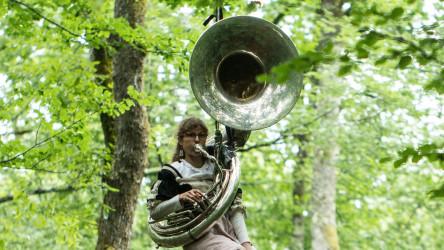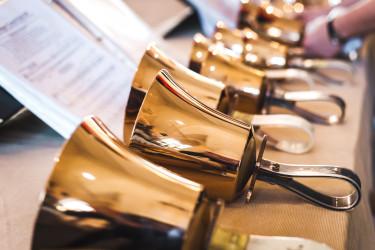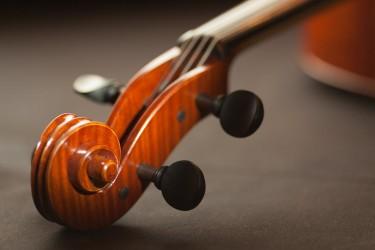
‘Oh,’ said Tubby, ‘every time we do a new piece,
You all get such pretty melodies to play
And I, never, never a pretty melody.’
But people never write pretty melodies for tubas. It just isn’t done.
‘Please, sir, I thought it would be so nice to dance with the pretty little tune. Instead of just going oompah oompah all the time.’
—“Tubby the Tuba” by Paul Tripp and George Kleinsinger (1945)
Oh, the mighty tuba. With a length of nearly three times that of a trumpet, a three-plus octave range, and a size that practically requires the lung capacity of an Olympic swimmer to play, it’s hard to believe this newer member of the brass family could ever be made fun of. And yet the stereotype of “tuba as jovial oom-pah machine” persists.
If we were to get technical, the tuba only provides the “oom,” while higher-pitched instruments like the clarinet provide the responding “pah.” This is because the tuba — the lowest member of the brass family — is considered a bass instrument, serving as the anchor of the brass family. In military and marching bands, the tuba is simply called the bass, and it is frequently used to add depth and power to musical passages.
The tuba isn’t only about power and stability, however. As Tubby, the brave brass protagonist of Tubby the Tuba illustrates, the instrument has a soft spot as well. Below are five pieces that celebrate the impressive, underrated depth and range of the tuba.
1) Silvestre Revueltas: Sensemayá
Composer Silvestre Revueltas summons the full power of blasting brass and chopping strings in his exciting depiction of this Afro-Caribbean sacrificial snake ritual. The tuba takes over at the 0:31 mark, setting the stage for the calculated chaos to come.
2) Modest Mussorgsky: The “Bydlo (Oxcart)” movement from Pictures at an Exhibition
It’s a shame that this inner movement from Pictures at an Exhibition isn’t performed more often. The tuba is the undeniable star of the show here, kicking the movement off with a lyrical, sparsely-accompanied, solo.
3) Richard Wagner: The Ride of the Valkyries from Die Walküre
We can’t have a list of orchestral tuba moments without mentioning Ride of the Valkyries. This is the tuba in peak powerful form. A far cry from jovial oom-pahs, Wagner shows a focused and feisty side of the tuba here that we don’t want to mess with.
4) George Gershwin: An American In Paris
At the end of his jazz-influenced orchestral piece, Gershwin calls for a gentle violin solo immediately followed by a delicate tuba solo. Hand-offs like this are quite hard to execute with sensitivity, making this quiet moment especially vulnerable for an audience to experience. Lucky for us, the soloists in the LA Philharmonic led by Gustavo Dudamel pull this off with a tenderness that could make us weep.
5) John Williams: Jabba the Hutt
When Star Wars: Return of the Jedi graced the silver screen in 1983, fans were introduced to the notorious crime lord Jabba the Hutt. For whatever reason, John Williams depicted this character with a mysteriously assertive tuba solo lightly accompanied by string pizzicati and other orchestral elements. The solo gained such cult popularity in the tuba world that Williams later turned into a fuller “mini-concerto.” Today, the Jabba theme is celebrated by fans everywhere.
So that’s our list. What are your favorite tuba moments in orchestral music? Leave us a comment or make an on-air request!
Special thanks to tubist Andres Trujillo for repertoire inspiration.







